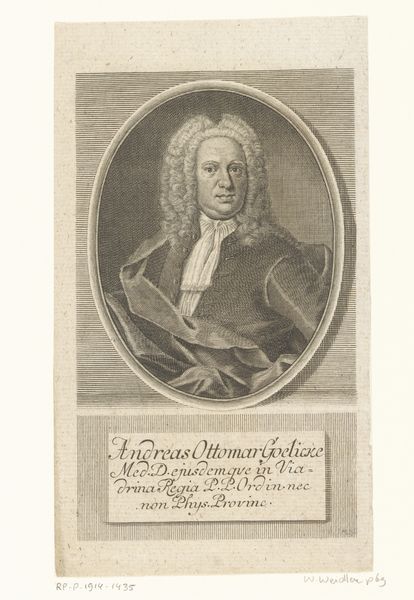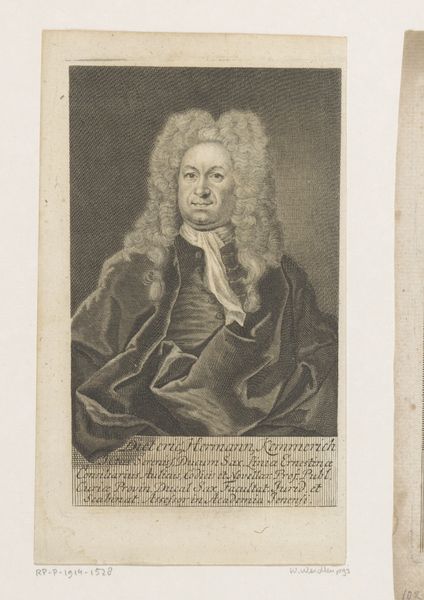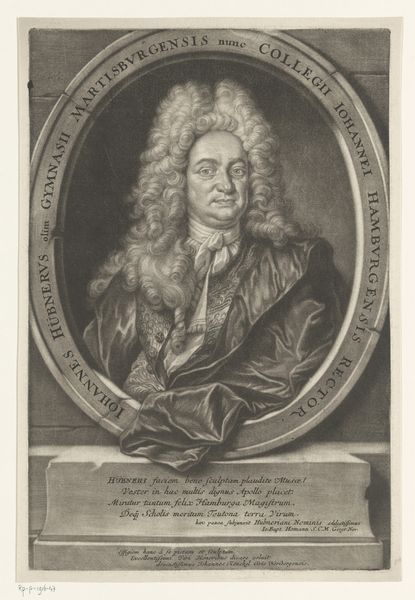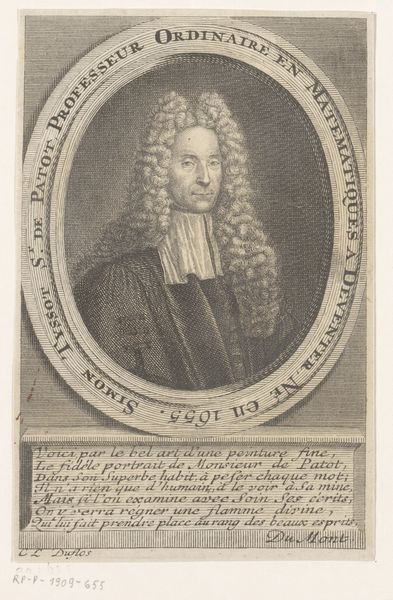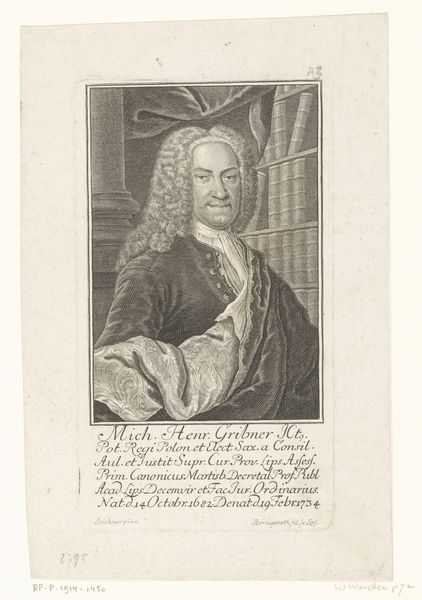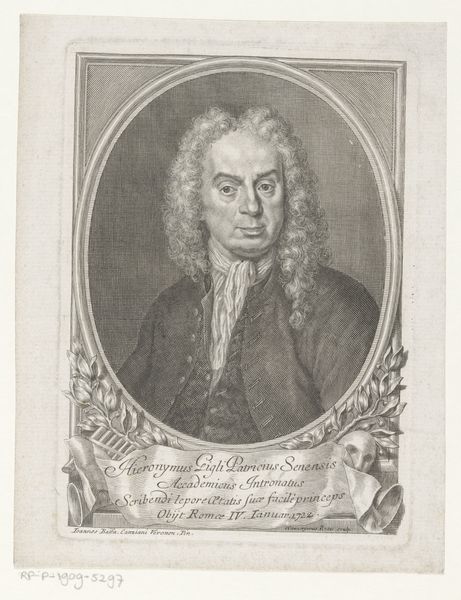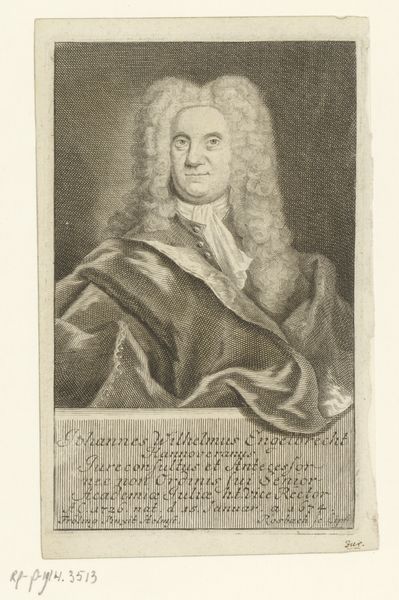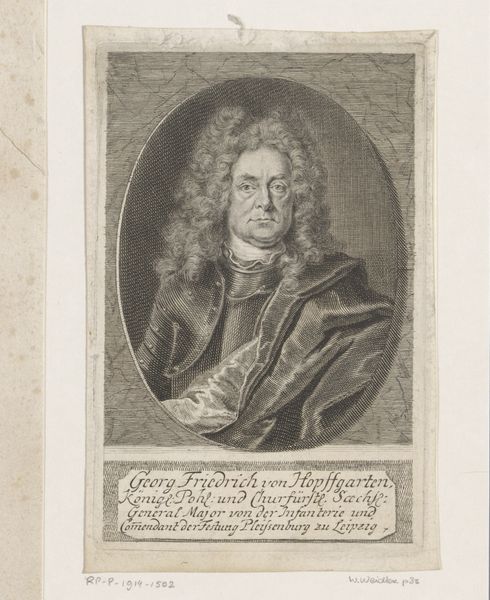
print, engraving
#
portrait
#
baroque
# print
#
old engraving style
#
figuration
#
portrait reference
#
line
#
engraving
Dimensions: height 159 mm, width 99 mm
Copyright: Rijks Museum: Open Domain
Curator: Ah, this print really pulls you in. We are looking at Johann Martin Bernigeroth's 1734 engraving, "Portret van August Friedrich Müller," currently residing at the Rijksmuseum. Editor: My immediate reaction is all about the texture – that stark, linear quality you only get from meticulous engraving. The details feel incredibly intentional; nothing seems accidental about that wig. Curator: Indeed. It is very typical of the baroque era with the formality, but look at the wig—all the work done by hand! And then, framing the whole portrait in that contained oval, further emphasizes August Friedrich Müller’s stature. Editor: Which tells a story about class and craft, doesn’t it? Here’s an object intended to immortalize and elevate someone—August Friedrich, apparently an organist and professor. And what immortalizes him isn't simply his achievements, but all the artisanal labor involved in its creation. Curator: Absolutely! Every single one of those lines had to be placed intentionally with remarkable precision and care—each contributing to the likeness. Consider, also, the statement this makes about reproducibility. Prints allowed images and ideas to spread farther and wider than ever before. Editor: Precisely! It democratizes the portrait, making it accessible beyond a wealthy patron’s walls. And while we marvel at Bernigeroth's skill, it's vital to remember the artisan-level labor that actually made such cultural dissemination possible. How different this object feels from the brushstrokes of oil on canvas. Curator: I always get this sense of calculated order and thoughtful arrangement. Looking closely reveals layers, both technically, with cross-hatching that give the coat substance, and conceptually with all of those printed copies shaping Müller’s cultural impact. It almost creates a sense of timeless presence despite it just being lines on paper. Editor: Right. Lines etched not just to create a portrait but to actively construct legacy. Makes you wonder, how did Müller compensate Bernigeroth, and how many prints did they run? It really underscores the fact that art – even seemingly 'high' art – is so deeply intertwined with economic and social fabrics. Curator: Agreed. Gazing at Bernigeroth’s artwork has given us both something to consider: craftsmanship, legacy, the power of dissemination, and perhaps even mortality, given its commemorative function. Editor: A printed portrait, ultimately revealing a lot more about how we choose to value an image, the person represented and the means by which they're reproduced.
Comments
No comments
Be the first to comment and join the conversation on the ultimate creative platform.
